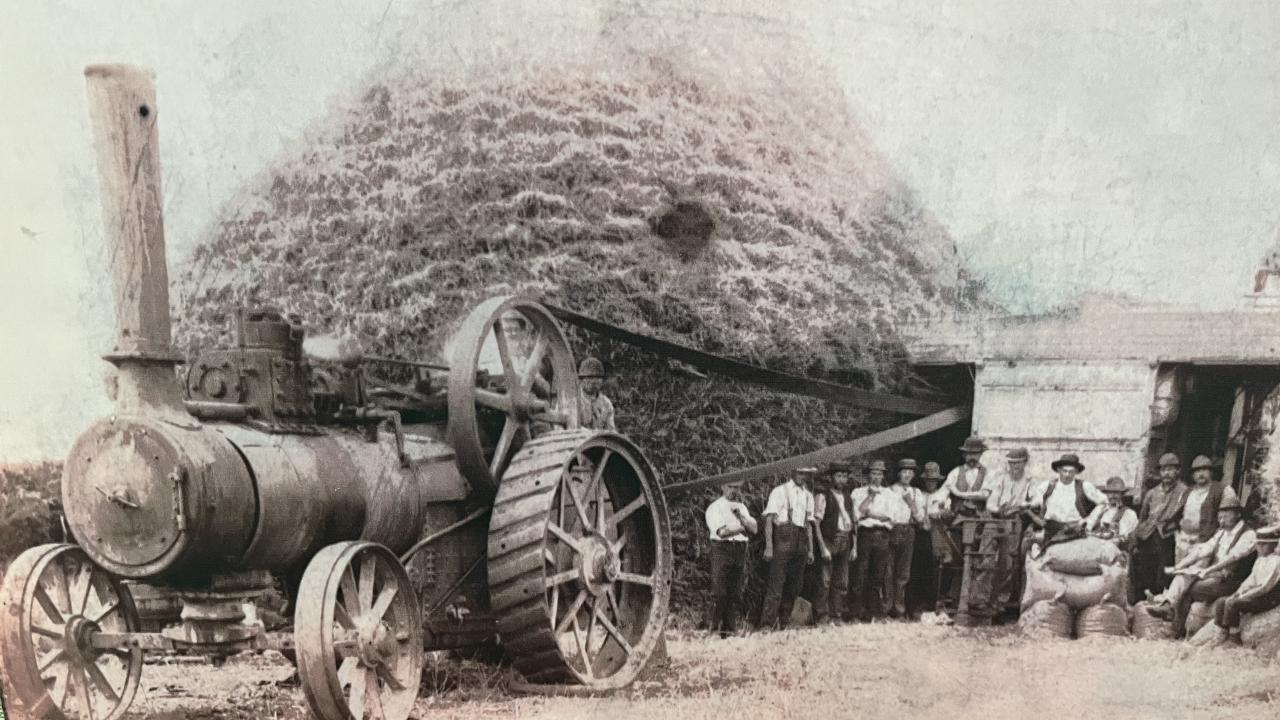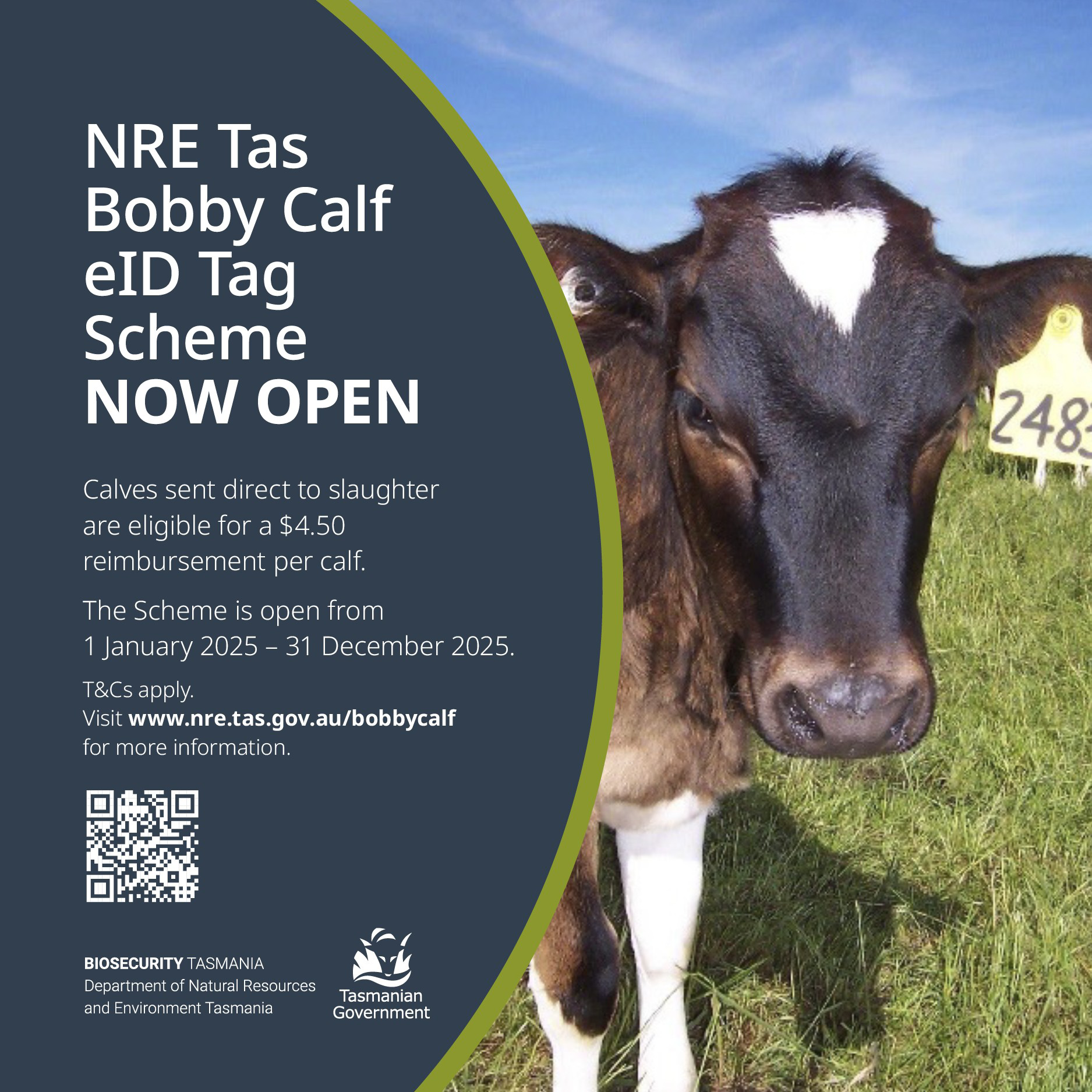Preservation Matters - Tasmanian grains an early success story

During much of the 19th Century, Tasmania was the leading producer of cereals in Australia, with the central northern area, the centre of production within the colony.
Steam power was an essential part of cereal production up until 1940.
The early years of the Colony saw food shortages and records for 1809 describe how all grain was expended by October and consequently even pounds of kangaroo meat were issued instead. Seed wheat and barley was issued in March and May to settlers on loan to encourage production.
By 1812, the situation had changed, and the "Cyclops" sailed from Sydney with a cargo of wheat grown in the Van Diemen's Land, for the home country.
By 1818 the area of wheat had grown to 5,000 acres, with the 1840's Tasmania's area of 80,000 acres outstripped New South Wales, Western Australia, Victoria and South Australia individually and represented nearly half the wheat grown in Australia. Most of this production was reaped by sickle and threshed by flail.
Reapers and threshing mills had been developed but their use was not widespread. Workers saw these inventions as a threat to their livelihood and resisted their introduction. In England where labour was plentiful, some threshing plants were burned and in many cases the owners were forced to dismantle their machines.
In 1823, Joseph Brown had developed a reaping machine to the stage where it was estimated that it would cut 14 acres of gran per day. However, working people threatened to kill Brown if he persevered any further with it.
In 1832 Patrick Bell developed a successful reaper in Scotland. Of the
20 or so of those machines made, 2 were exported to Tasmania, an indication of the importance of grain production in this Colony.
However, reaping machines were not accepted for many years. Of the 62,400 acres harvested in 1867 only 2,400 areas were cut by machine.
More cereals were produced in Tasmania in the 1860's than a century later, output for 1861 was 58,000 tonnes compared with the 34,000 tonnes in 1987.
In northern Tasmania, wheat production was the main agricultural enterprise and the mainstay of the economy. Of the 450 double furrow ploughs in the state, 170 were in this area.
The binder, which made sheaves bound with wire or twine was first marketed in America about 1874. It was reported by 1878 that there were five in use in Tasmania. By 1888 there were 470 in the state.
Few farms were large enough to warrant the ownership of a steam engine so it became natural for people who had the skills to specialise as contractors. Their plant included a steam threshing drum, chaff cutter, straw press and saw bench.
These machines which had gangs of workers necessary to operate them, would move from farm to farm, many of the workers rode bicycle to the job each day. Every plant seen moving along a country road, towed after the essential threshing drum of chaff cutter, a mobile hut, fitted with bunks for those who needed to sleep at the work site.
The engine driver had the greatest responsibility. He rose early to fire the engine so that steam was available for a 6.00am start (one hours work before breakfast). He then had to ensure that the threshing drum produced quality grain, making adjustments to the concave setting to the many flat belts and oil for a host of bearings.
He had to ensure that sparks from the engine did not ignite the sheaves of grain and in passing had to direct the gang of up to 20 workers. The farmer's wife had to feed those gangs of workers three substantial meals and lunches per day.
The years between 1880 and 1940 saw steam reign as the supreme provider of power for rural activities. Following the end of WW2 with the rapid increase in the rubber tyred tractors and the introduction of the mobile harvester saw the end of the age of steam. All of this early agricultural heritage has been preserved in working order and may be seen at Pearn's Steam world, at Westbury.
Why did Tasmania produce so much grain in the early days?
Firstly, Tasmania was settled as a penal colony soon after Sydney. The grain varieties sent out from England were suited to our climate. It wasn't until plant breeder William Farrer developed dry wheat varieties suited to mainland conditions that production became more successful for the mainland states.
The bakers prefered to use dry wheat varieties as they need to use less flour and are able to mix more water with the dough and therefore able to produce more loaves of bread from a bag of flour.




Add new comment